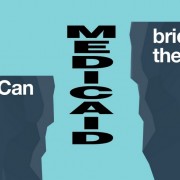You are looking at an archived version of our site. Please visit thepcc.org for a fresh, new experience!
Payment Reform
Various payment innovations have been testing ways to support primary care innovation and PCMH for many years. Depending on the region and the provider arrangement (e.g., a solo or small practice, an Independent Practice Association or Accountable Care Organization (ACO), or an employed provider as part of a health system), some practices that were once paid fee-for-service only, are now receiving additional per member per month payments (PMPM). Others are receiving payment incentives tied to performance metrics that measure quality, cost, or patient engagement. Medicare has been piloting various types of payment reform — ranging from pay-for-reporting to bundled payment — but the scale and spread of delivery models that tie payment to quality for all Medicare benefi ciaries is more recent.
As part of the Affordable Care Act, the Centers for Medicare and Medicaid Innovation (CMMI) is spearheading one of the most aggressive efforts in recent history to address delivery system reform. Recent passage of MACRA can help bring these efforts to scale across the entire Medicare program, and subsequently impact the broader commercial marketplace.
Payment Reform & PCMH: Value-based Purchasing in the Public and Private Sector
Because fee-for-service does not reimburse for key PCMH features — such as facilitating information sharing and care coordination with sub-specialists and hospitals, managing web-portals and personal health records, email communication and telephone visits, developing connections to community-based organizations, and integrating behavioral health — it often fails to compensate for the complete scope of services offered by a PCMH. Smaller practices with little reserve capacity are especially challenged in offering PCMH-level care without adequate financial support.
Numerous alternative payment models (APMs) are poised to support PCMH implementation and sustainability. Significant experimentation and testing of alternative payment arrangements is well underway, ranging from accountable care, to episode-based payment initiatives, to up-front payments that support primary care practice transformation, to initiatives that focus on specific populations, such as Medicaid, CHIP, or individuals dually eligible for Medicaid and Medicare.
For more information, please access our 2014-2015 PCMH evidence report.
Resources

Milbank Memorial Fund | January 2010

Patient Health Questionnaire (PHQ) Screeners | January 1996

The Robert Wood Johnson Foundation | February 2013
- ‹ previous
- 12 of 15
- next ›
News
November 26, 2018 | The Hill
November 24, 2018 | Modern Healthcare
November 15, 2018 | STAT
- ‹ previous
- 12 of 69
- next ›
Events & Media
October 25, 2016 | Patient-Centered Primary Care Collaborative
June 28, 2016 | McKesson
April 28, 2016 | Patient-Centered Primary Care Collaborative
- ‹ previous
- 12 of 34
- next ›
Related Content
| Title | Date | Source | |
|---|---|---|---|
 |
Evolving Models of Behavorial Health Integration in Primary Care | January 2010 | Milbank Memorial Fund |
 |
Aligning Incentives & Systems:Promoting Synergy Between Value-Based Insurance Design (VBID) and the Medical Home | January 2010 | Patient-Centered Primary Care Collaborative |
 |
The Triple Aim: Care, Health, And Cost | May 2008 | Health Affairs |
 |
Patient Health Questionnaire - Mental Health Tools | January 1996 | Patient Health Questionnaire (PHQ) Screeners |
Pages
| Title | Source | Date |
|---|---|---|
| Could Medicare’s New Doctor Payment System Endanger Small and Rural Practices? | Washington Post | August 23, 2016 |
| Few Docs Ready for Risk Under MACRA | Modern Healthcare | August 13, 2016 |
| MACRA Matters Affecting Rural Providers | RACMonitor | August 3, 2016 |
| ACO Participation Prepares FPs for MACRA Implementation | AAFP News | August 2, 2016 |
| PCPCC Pleased by Federal Announcement of 14 Regions Selected to Participate in Comprehensive Primary Care Plus Initiative | August 1, 2016 | |
| Slavitt: ‘We’ll Go as Fast as the Evidence Allows Us to Go’ | Modern Healthcare | July 30, 2016 |
| CMS Proposes Expanding Diabetes-Prevention Model | Modern Healthcare | July 7, 2016 |
| The Average Hospital Stay Now Costs More Than Average Rent:And That’s After Insurance | Vox Science and Health | July 6, 2016 |
| MACRA, MIPS, and APMs:Are You Ready? | Physicians Practice | July 6, 2016 |
| How The 60-Day Repayment Rule Will Impact You | Physicians Practice | July 5, 2016 |
Pages
Secondary menu
Copyright © 2024 Primary Care Collaborative










